The Frisky car project was conceived by Captain Raymond Flower, racing driver and Managing Director of the Cairo Motor Co Ltd., Nuffield distributors in Egypt Flower operated the company with his two brothers, Derek and Neville. From February 1955, under the auspices of the Cairo Motor Company, a number of projects for the manufacture of cars in Egypt under the general name of Phoenix were mooted in the press, possibly as a way of gaining favour with the government of President Nasser. However, as the relationship between Egypt and Britain deteriorated with the onset of the Suez Crisis in 1956, little of substance materialised.
As the potential for manufacture within Egypt dissipated, Raymond Flower took his idea of a small, mass-produced, economical lightweight car for every-man to manufacturers in the UK, eventually reaching an agreement with Henry Meadows Ltd to proceed with the project.

The Bug"prototype in 1957 with designer Gordon Bedson behind the wheel
The Meadows company was a well-established supplier of automotive, marine and industrial engines and was a part of the Associated British Engineering Company. Gordon Bedson, formerly a design engineer for Kieft Cars and the Vickers aircraft company, had joined Meadows as Export Sales Manager in 1954. Bedson, whose work at Kieft had included the design of their first sports car, and who had also designed a saloon car prototype for the Phoenix project, was called upon to bring his design experience to the Meadows car alongside Keith Peckmore, a project engineer who was also ex Kieft.
Commencing around July 1956, in a back room at the Meadows factory, a prototype vehicle, nicknamed The Bug was constructed and developed. This small, four-wheeled, two-seater, was steel bodied with gull-wing doors and a Villiers air-cooled 250 cc (15 cu in) two-cylinder engine fitted to a brazed ladder-type chassis. To obviate the need for a differential, the car used a very narrow rear track, with drive to the solid rear axle by roller chain. The car was fitted with a four-speed motorcycle manual gearbox, with reverse obtained by running the engine backwards through the starter motor.
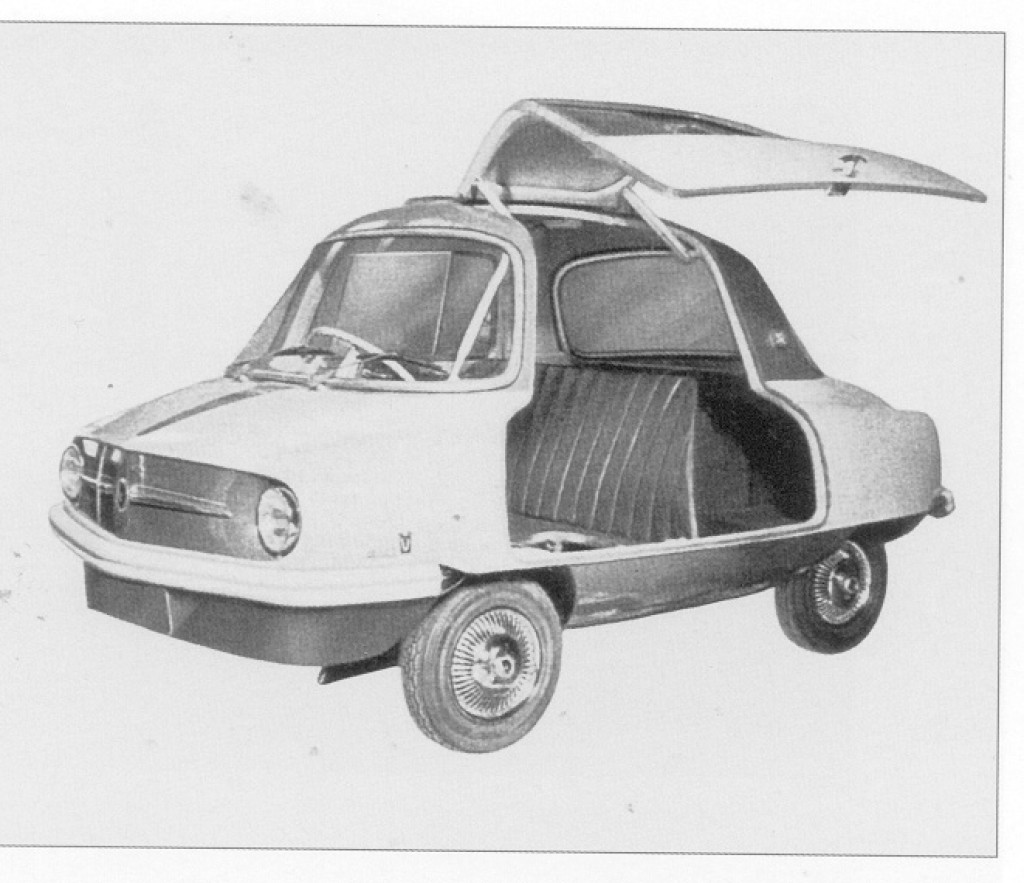
The Michelotti-designed "Gull Wing"Meadows Frisky at the 1957 Geneva Show
Whilst The Bug was under development, the Italian coachbuilding company Vignale of Turin, was commissioned by Flower to design the bodywork for the production version, a task they allocated to Giovanni Michelotti. On December 5, 1956, The Bug which had been taken to Oulton Park motor racing circuit, commenced a seven-day 24-hours a day test run, completing 4,000 miles (6,400 km) with a fastest lap of 54.91 miles per hour (88 km/h). Although The Bug had nothing to do with the Egyptian Phoenix project, because of the attendance of Raymond Flower at the circuit with his Phoenix SR150 sports racer and an embargo on the use of the Meadows name in connection with The Bug, Press reports of the test run erroneously referred to the Meadows project as the Phoenix minicar or Phoenix Frisky.
The disclosure of the Meadows company involvement and the correct nomenclature Meadows Frisky was announced by the press on March 11, 1957 just prior to the Geneva Motor Show. The press release included information about the Oulton Park test run and information about the involvement of Raymond Flower in the project and Michelotti in the design. The release also stated that the Frisky would be priced at "under £400"
Vignale delivered the body of the new car directly to the Geneva show. As this left no time to install the engine, it was displayed separately in front of the car. The design retained the gull-wing door concept from The Bug and the car attracted widespread interest and acclaim. Two of these bodies were produced by Vignale however it quickly became clear that the design would be too expensive for mass-production and so work began on completely redesigning the car in time for the Earls CourtMotor Show in October.
In June 1957, a new subsidiary of the Meadows company - Henry Meadows (Vehicles) Ltd was registered in anticipation of the production of the car.
Amongst the design changes that took place before October were the replacement of the gull-wing doors with a more conventional suicide door type and the fitting of a larger Villiers engine of 324 cc (19.8 cu in). Immediately before the show it was reported that the prototype had now covered over 100,000 miles (160,000 km) and pre-show publicity stated that there would be two cars on show, the Frisky Saloon and the Friskysport, a convertible version. Brochures displaying artists impressions of both vehicles were printed. However at the show, the "saloon" prototype on display never made production, but the new convertible Meadows Friskysport was met with an enthusiastic reception from the press.
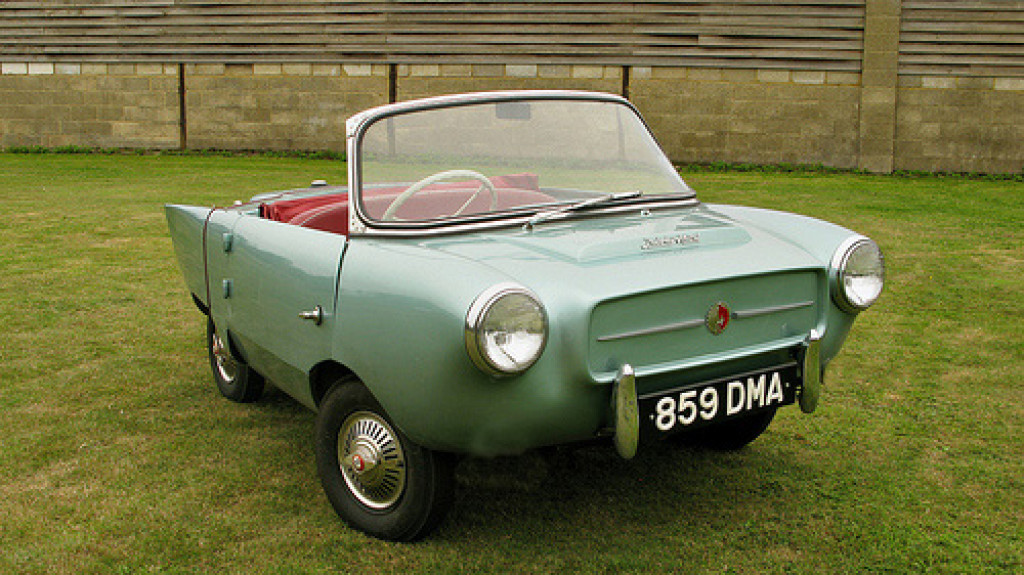
The Meadows FriskySport
Reports from the show stated that the car was "not yet in full production", in fact, production of the car did not commence until five months later in March 1958.
In February 1958 a controlling interest in Henry Meadows (Vehicles) Ltd. was acquired by the Flower Group of companies. Raymond Flower was appointed chairman and managing director.
In September 1958 production of the Friskysport was taken over by The Marston Group of Companies; they acquired a controlling interest in Henry Meadows (Vehicles) Ltd and the name of the production company was changed to Frisky Cars Ltd.
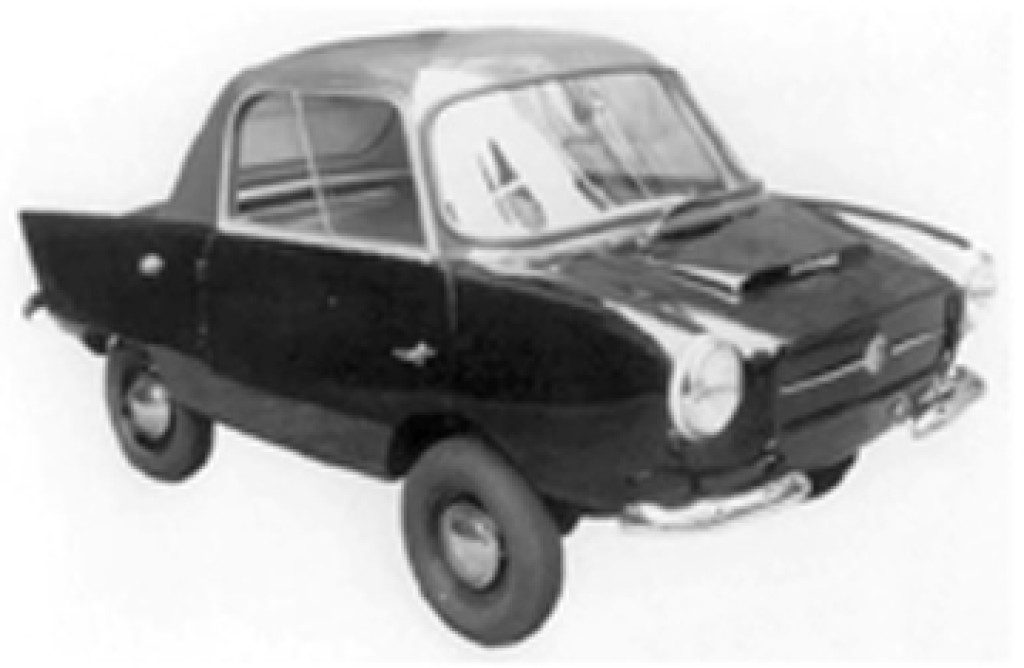
The Frisky Coupe
The Marston Group were a diverse range of interests including car dealerships, caravan manufacture, vehicle body manufacture and Regency Covers Ltd., who were at the time the largest manufacturers of car seat covers in the country.
The Chairman of the newly formed Frisky Cars Ltd was Henry R Stone. Raymond, Neville, and Derek Flower were made directors. Distribution of the car was to be handled by The Arneston Motor Company Ltd. London, which belonged to Henry Stone. The franchise was also taken up by other companies of his such as The Pointer Motor Co. of Norwich.
In September 1958, it was announced that production of the Friskysport was "being supplemented by a hard-top".This "hard-top" car, a saloon version of the Friskysport named The Frisky Coupe went into production in August and made its public début at the 1958 Earls Court Motor show in October. Alongside were two other new models, The Frisky Family Three and The Frisky Sprint.
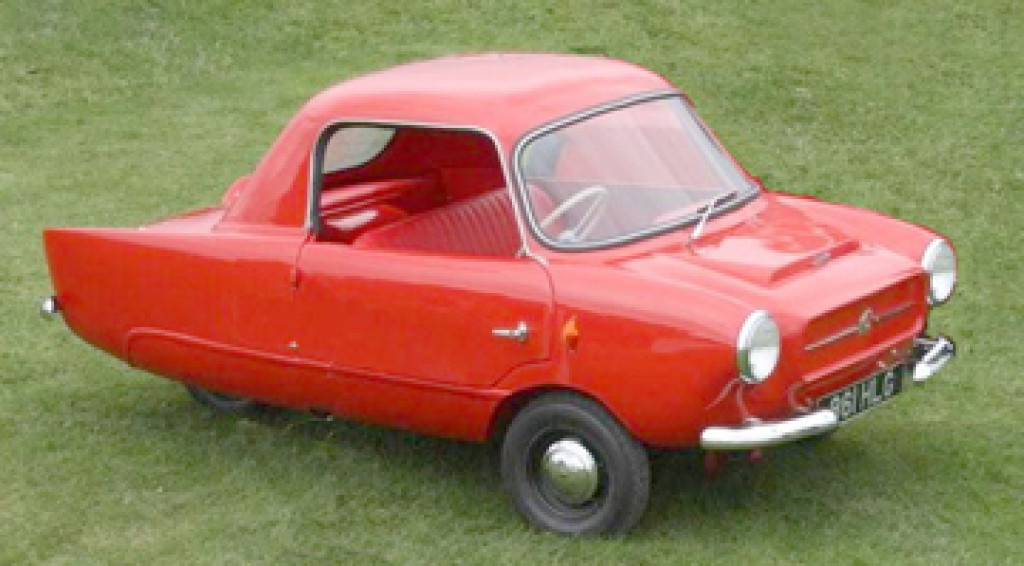
The Frisky Family Three
The three-wheel Family Three was classed as a motorcycle combination for tax and driving licence purposes
The production versions of the Friskysport and Frisky Coupe were very similar and used identical chassis, but there are differences to the bodywork. Early versions of the Friskysport are fitted with a separate chrome windscreen frame(,the screen later used in the Reliant Sabre) they have a detachable tail section and dummy air intake scoops just behind the doors whilst later cars did not have the have the detachable tail section . The Friskysport has only overriders, whilst the Coupe has plain bumpers. The Coupe show / Press car used the Friskysport body with an integral, glassed-on roof and steel framed front windscreen. Production Coupes used the Family Three one-piece body.
The Frisky Family Three was basically a three-wheeled version of the coupe fitted with a smaller Villiers 9E engine and MacPherson strut front suspension. Having three wheels instead of four meant the car qualified for lower vehicle excise duty and also meant that it could be driven with a motorcycle licence. It entered production in about February 1959
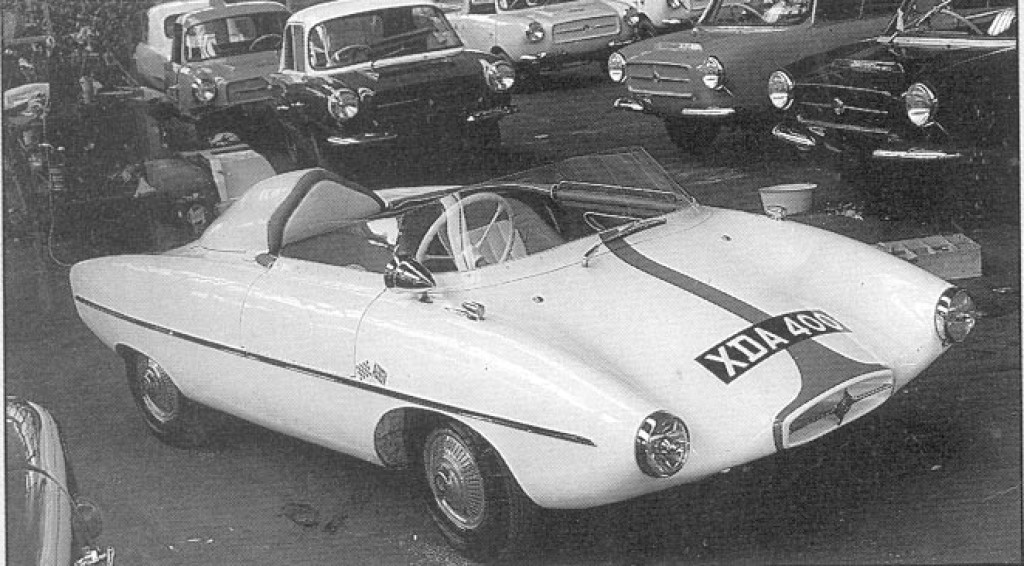 .
.
The FriskySprint inside the Meadows factory
The FriskySprint was a prototype sports racing car built at the Meadows factory and said to be capable of 90 miles per hour (145 km/h). Press reports stated that on production versions the front suspension and probably the chassis and running gear would be made at the Vickers-Armstrongs (Aircraft) factory at South Marston. The prototype was finished in the American national racing colours of white with a blue stripe. It featured two bucket seats and a three-cylinder air-cooled 492 cc (30.0 cu in) Excelsior engine mounted transversely in the frame with final drive by roller chain. Unlike all other Friskys, the rear axle was full width and fitted with a differential. The car was also independently sprung using a swing axle layout. It was expected to sell for between £675 and £750 including purchase tax. The Friskysprint never reached production and Gordon Bedson who designed and built the prototype left in 1959 to join Lightburn in Australia the following spring to produce the Lightburn Zeta Sports. The FriskySprint and Lightburn Zeta Sports had similarities in styling and despite Lightburn advertising to the contrary, Giovanni Michelotti was not involved in the design of either the Sprint or the Zeta Sport.
In June 1959 Frisky Cars Ltd experienced financial difficulties, and an order was made by Hills Fibre Glass Developments, who produced the bodies for the Frisky, for a debt of £3,500. Despite being in poor health at the time Henry Stone vigorously defended the order and with the support of his employees and all the other creditors put forward an alternative plan. Because of the insistence of the creditor, the judge, Mr Justice Valsey, had no alternative but to grant the order saying that "he did so with some regret". All production ceased and the company was wound up.
In August 1959, Mr C. J. Wright a Wolverhampton business man with garage and haulage interests, bought the stock, jigs, tools, fixtures and fittings, along with the rights to manufacture and the trade name of Frisky from the Official Receiver. He formed a new company Frisky Cars (1959) Ltd. and he and E F Wright became directors. A Mr G A Stuart was made general Manager. The company announced that they hoped to restart production in September at Fallings Park with a target of 30 three wheeled cars a week, also that a deluxe version would follow and that it was hoped the Friskysprint would be built later. Also announced was the intention to build a new production plant on a 30-acre (120,000 m2) site in Penkridge but this never happened.

The Family Three Mk2
The rear of a Family Three Mk 2 showing the additional hatch over the engine, unique to this model.
In September 1959 a new version of the Family Three was announced. The Frisky Family Three Mk2, this dropped the MacPherson strut front suspension of the original car replacing it with the Dubonnet system used on the Friskysport. The chassis was lengthened to allow the engine to be moved back out of the cabin and it was now offered with the choice of either a 250 cc (15 cu in) or 328 cc (20.0 cu in) Excelsior Talisman twin engines giving the advantage of an Albion gearbox with a true reverse gear. Twin front seats replaced the original bench seats and production commenced in early 1960.
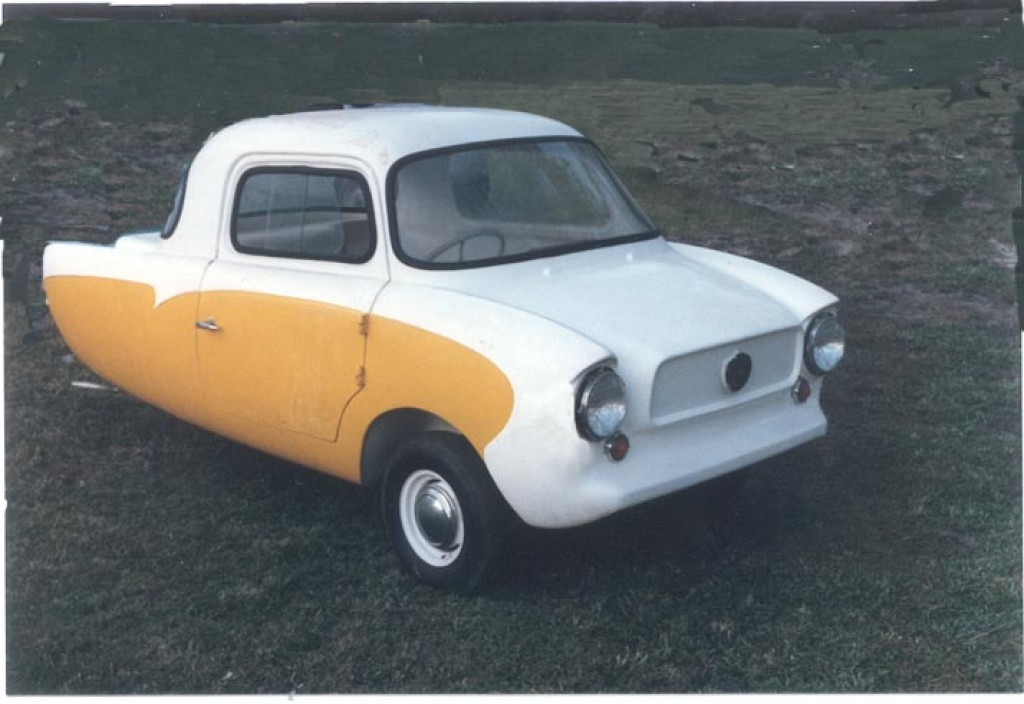
The Frisky Prince
In October 1960, a new model, The Frisky Prince was shown at the Earls Court Motor Show. This was basically a re-bodied Family Three with front hung doors. Around the same time, a deal was done with a company called Middlesbrough Motorcraft and kits to build your own Frisky became available from them. Anthony Brindle, who had become joint managing director of Frisky Cars took part in a publicity run attempting to visit five European capitals, Paris, Luxembourg, Brussels, Amsterdam and London not spending more than £5 on fuel.
A four wheel version of the Prince was announced for 1961 but never reached production.
In February 1961 the company was purchased by Mr R Bird, the chairman of Petbow Ltd. of Sandwich, Kent. Petbow were one of the worlds largest manufacturers of engine-driven power plant, including welding and generating equipment. All Frisky production and stocks were moved from the Meadows factory and a production line within Petbow's existing factory was set up.
Unfortunately the Frisky Prince, with strong competition from the BMC Mini, was not proving popular and chassis problems meant increasing time was spent rectifying customers cars rather than producing new ones and despite valiant efforts by staff and management all work ceased towards the end of 1961 so bringing to an end the production of the Frisky car.
In 1962 Mr Doug Smith an engineer working for the Admiralty set up Frisky Spares and Service Ltd in Queenborough, Kent and all remaining stocks of Frisky parts were moved there from Petbow's works. This company mainly supplied spares for existing car owners. No real production took place, they would assemble a car for a customer if required, but preferred to provide a kit so customers could construct their own. They ceased trading around 1966 and the remaining bodies were taken down onto Queenborough creek and burnt!
My thanks go to Malcom Parker for all his work in putting together the original version of this history that enabled the Wikipedia Meadows Frisky page to be created.